Searching
He was out on a hot, average day, but he had long become used to the weather that his hobby brought him.
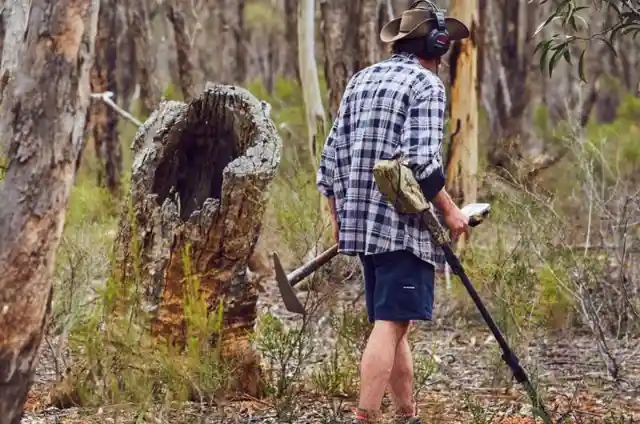
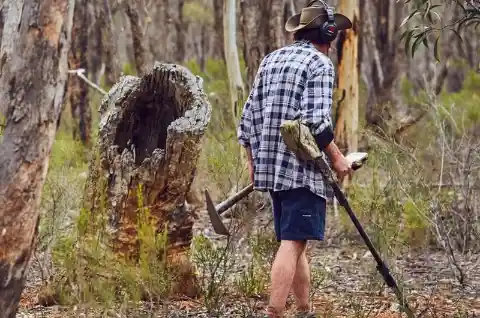
Still, he enjoyed the methodical back and forth motions as he swung the machine left and right, left and right inches over the grassy soil. Furiously loud beeping jolted his wandering mind as excitement began to course through his veins. What had he found?
Treasure Hunt
Buried treasure is something that fascinates children. Games are centered around finding hiding things, be it a person like ‘hide and seek,’ or delicious treats like ‘Easter egg hunts’.
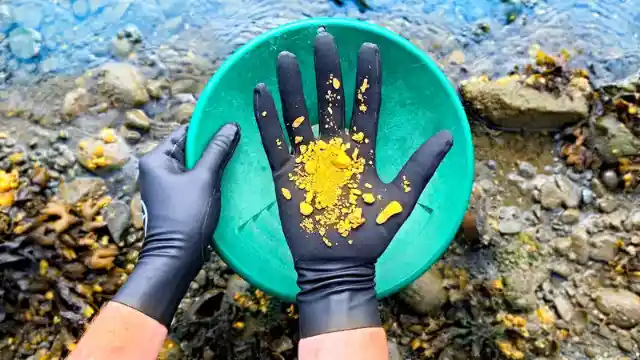
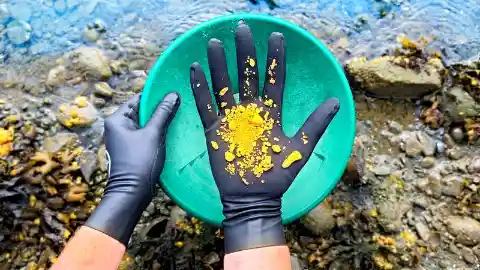
The thrill of anticipation in searching is only trumped by the victory of the discovery, and perhaps the eating of chocolate eggs.
His Favorite Hobby
Dave Hole is an avid history lover and he simply can’t get enough of finding treasures buried in the dirt long ago.
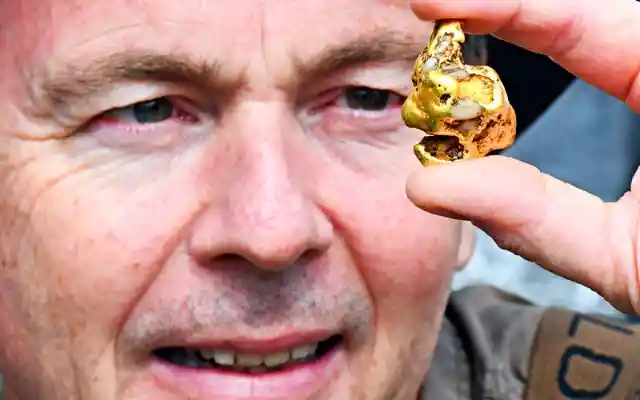
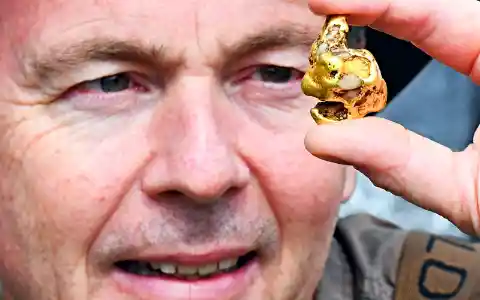
So, on your average day, while most people are shopping or perhaps watching a bit of television, you would instead find Dave out in a field wielding his metal detector. Often its rewards are minimal and sometimes nothing at all, but the addictive hope of a big find spurs him on.
Tenacity
It’s most certainly not a hobby for everyone, you need a certain tenacity about yourself to brave the elements of Maryborough Regional Park in Australia, which is often hot and dry.
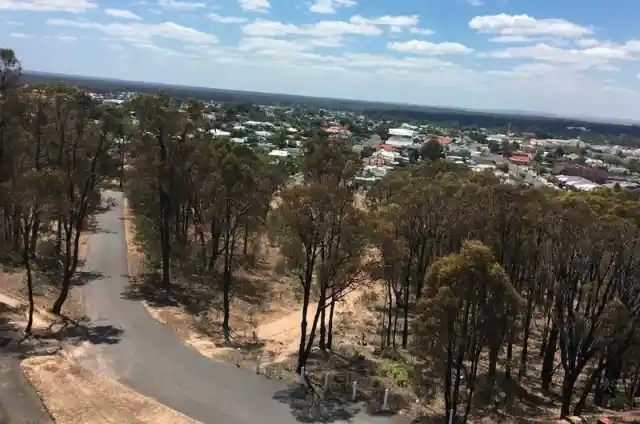
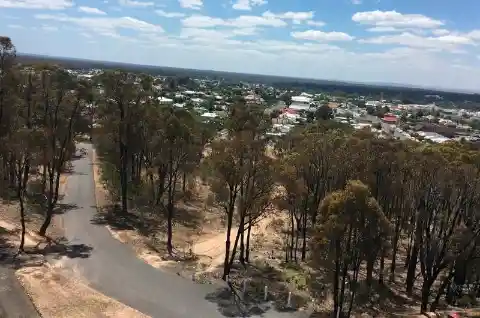
He knew he had as much chance of finding something noteworthy as winning the lottery, unless you count old pennies. But this particular day, brought on by a twist of fate, was not a penny-finding day.
Moving on
To Dave’s dismay, he found that his favorite field was filled with other treasure hunters, but he was determined to keep looking.
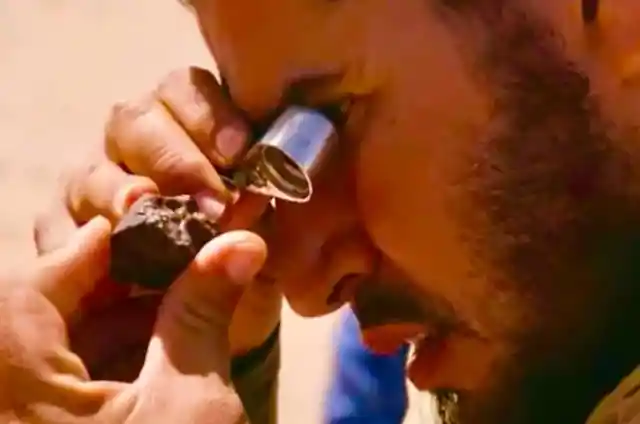
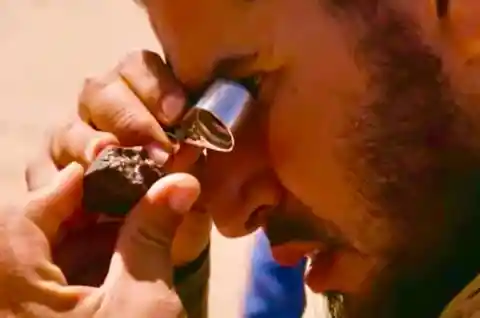
He had a strange feeling that today would be a lucky day. As he moved to another field nearby, he had no idea that just underneath his feet, something strange was lying in wait.
A Beep
Dave swept his metal detector in a wide arc over the field, and suddenly he heard a loud beep. He began to walk, but the machine kept beeping.
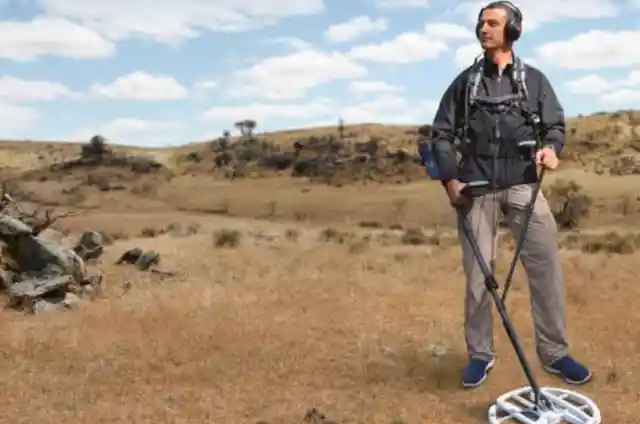
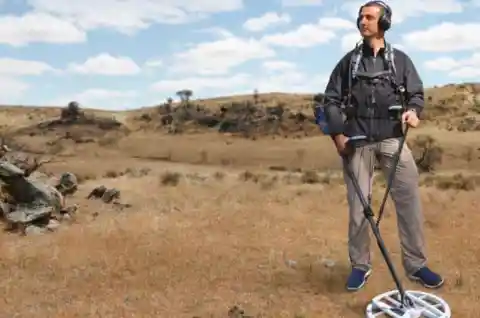
He was puzzled, at first, and thought that maybe his metal detector was faulty. Either that, or whatever was buried in the ground below him was something very unusual. There was only one way to find out.
Found Something
He abandoned his equipment, pulled out a trowel, and began to dig. The dry dirt and red clay gave way easily and soon he could see something sticking out from the soil.
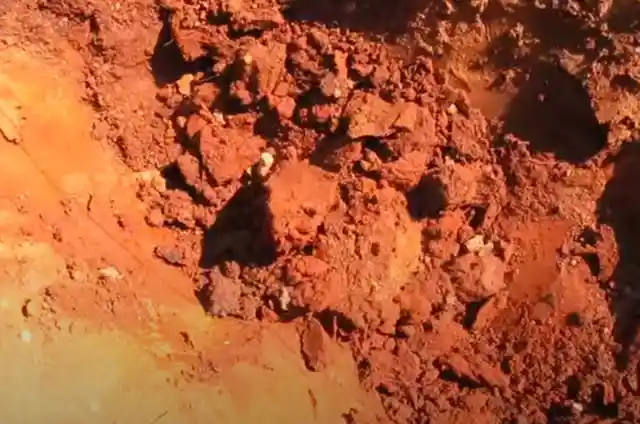
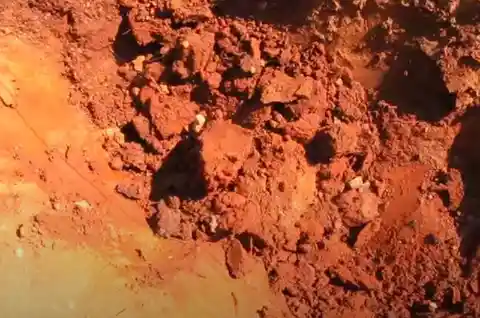
He uncovered it with his hands until he was able to get a grip on it, and then he pulled with all his might.
A Rock-Like Object
The reddish rock-like object wouldn’t budge, no matter how hard Dave pulled. He decided to try to dig around the mysterious object to free it from the earth.
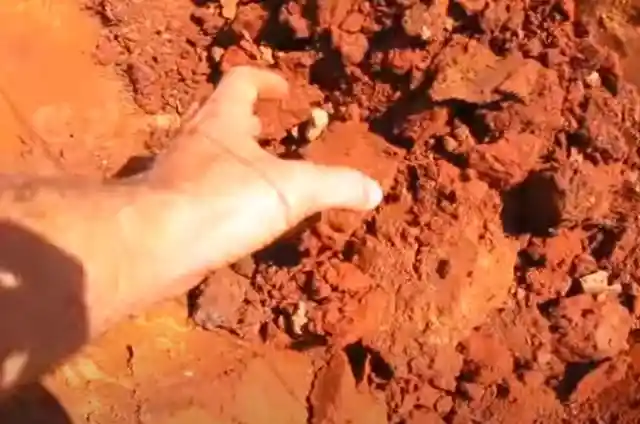
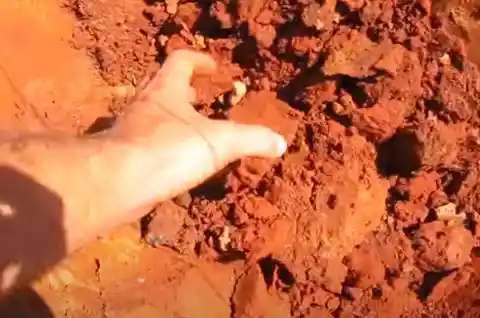
As he began to uncover more and more of the hard substance that had sent his metal detector into a frenzy, chills went up his spine. As the earth began to relinquish its grip, he whispered “that’s it...” But he had no idea what he was about to uncover.
Heavy And Unusual
The object, once freed from the soil, was surprisingly heavy. It took all of Dave’s strength to lift it out of its hiding place.
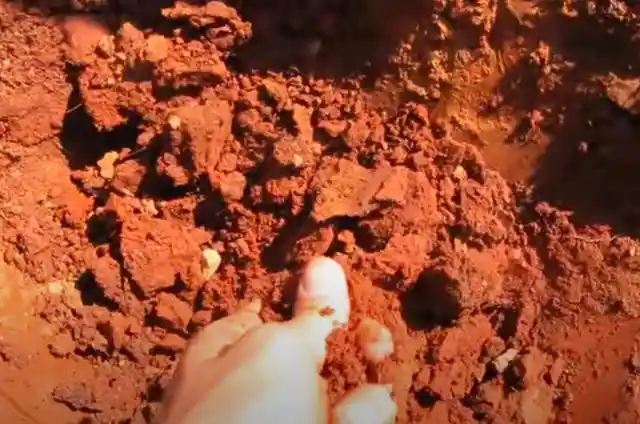
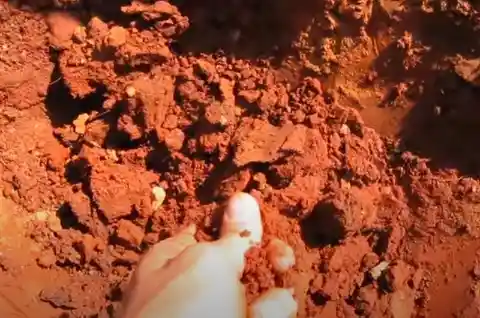
He sat back to examine his find and his heart began to race. It was a rusty, reddish color. And it was huge. He hauled it back to his home in hopes of smashing it open. He had a suspicion that there was something inside.
Trying To Break It Open
Once back at his home, Dave got to work trying to break the rock apart. He tried everything he could think of, but the thing was incredibly sturdy! He even hit it with a sledgehammer, which failed to even scratch its surface.
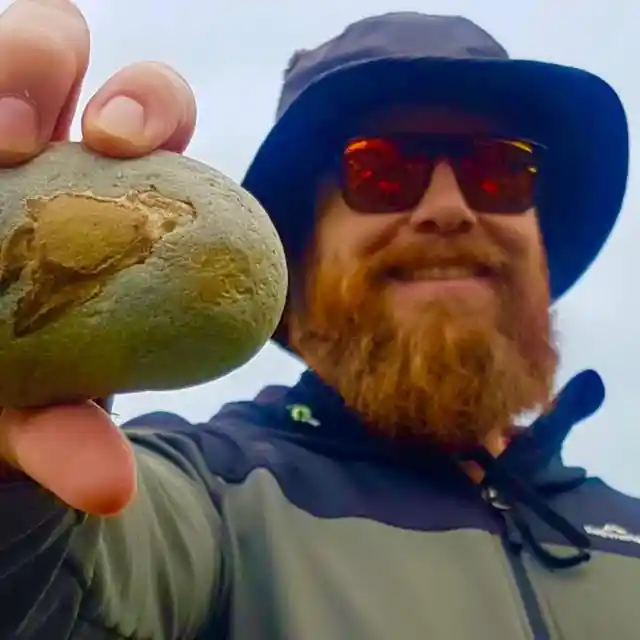
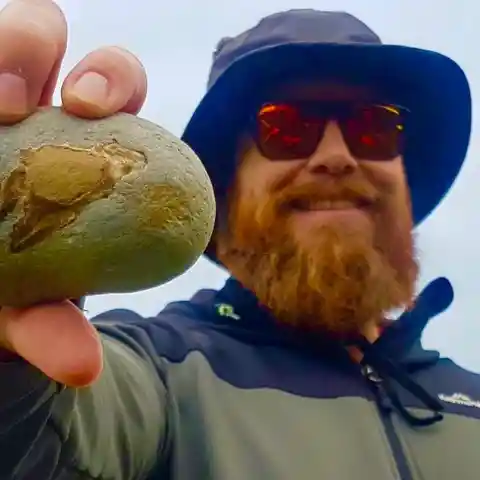
“Where do I go from here?” he sighed. If the rock was indeed ore, there had to be a way to get at the gold inside. But Dave never suspected that the “ore” was something else entirely.
Looking For Answers
Stumped, Dave stored the rock in his home for the next four years, planning getting all the gold out of it one day. But it wasn’t until 2019 that he stuck it in his backpack and marched over to the Melbourne Museum for answers.
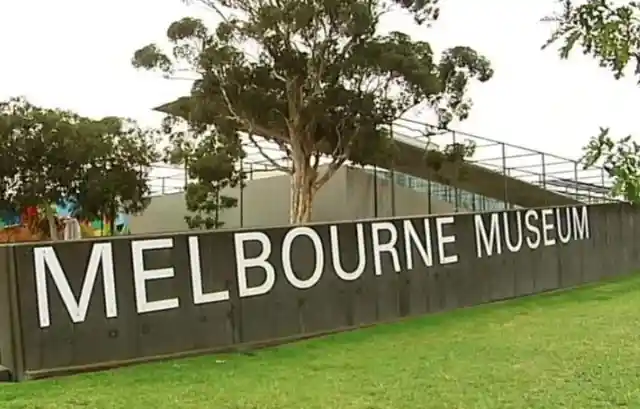
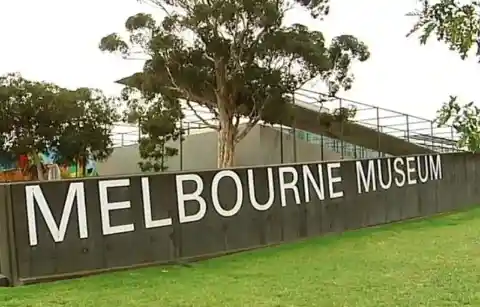
At the Melbourne Museum, Dave met geologist Dermot Henry, the person responsible for testing samples that people bring in to the museum. In particular, a large part of Dermot’s role involves examining possible meteorites to test their authenticity. But this rock that Dave found couldn’t be a meteorite? Could it?
Tests
Of course, testing the specimens was really more of a formality than anything — even after working at the museum for 37 years and testing thousands of samples, only two of those had ever turned out to be real meteorites!
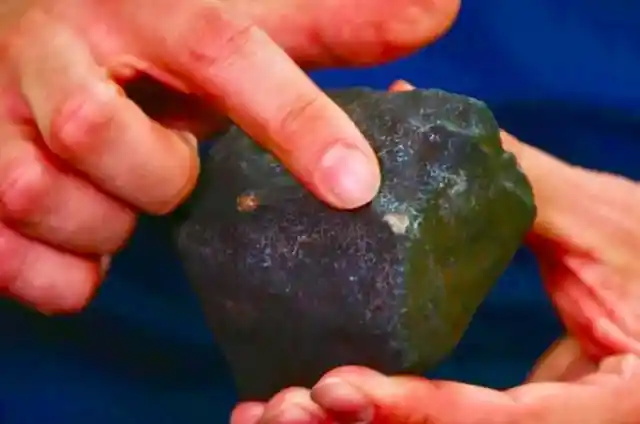
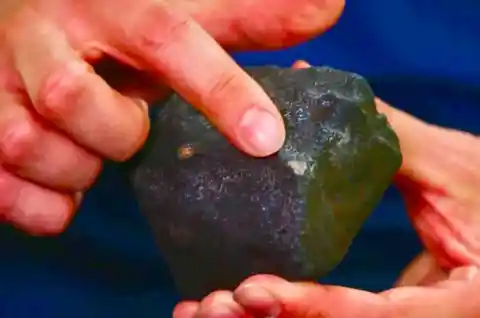
But Dave had a strange feeling about this rock -- a feeling that had plagued him for the past four years. But Dave was running out of time and patience. He needed answers now.
Disbelief
Dave walks into Dermot’s office and hoists the large red rock out his backpack. As he places the rock on the table, Dermot’s mouth drops and the scientist himself does a double-take.
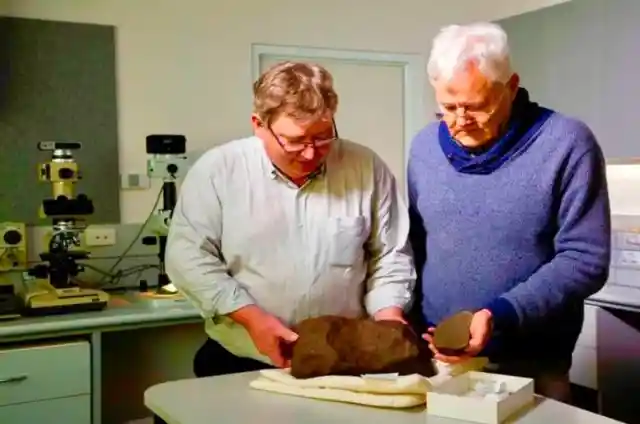
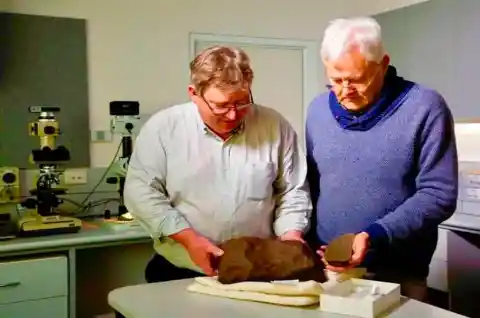
He strokes the rock and notes how its rough edges prick at his smooth fingertips. As he takes a closer look, a smile creeps onto his face. This looked very promising!
Strange Markings
Discussing the rock with Dave, scientist Dermot was fascinated with it’s sculpted, dimpled look.
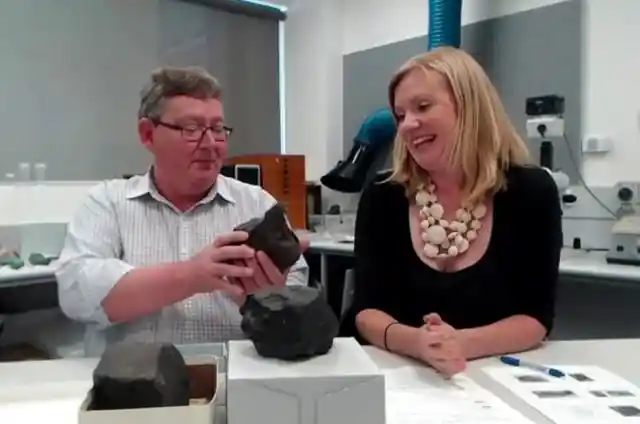
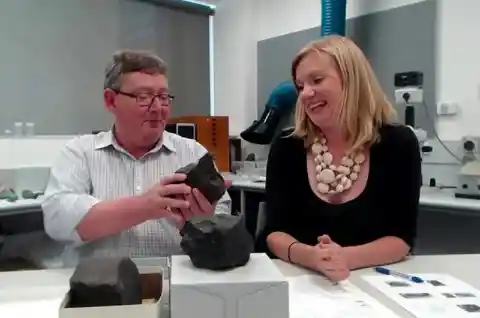
It turns out that the effect is formed when meteorites come through the atmosphere; they’re melting on the outside and the atmosphere whittles away at the surface, leaving a distinctive pattern. Dave was amazed! Could this rock really be the real thing?
Heavier Than It Appeared
Dermot lifted the rock and was even more encouraged. It was way heavier than it should have been for a normal rock found on Earth, especially considering its size.
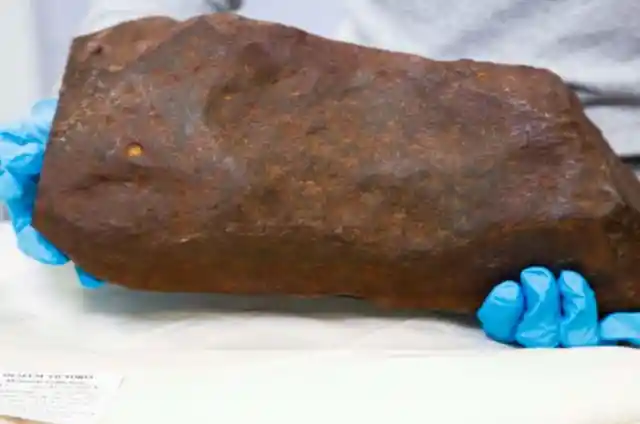
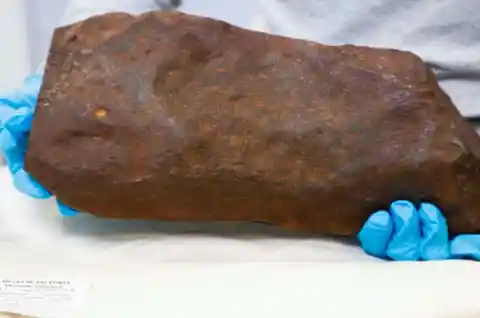
Meteorites, generally speaking, tend to be heavier because of dense deposits of iron and nickel found inside. And all signs were pointing to Dave’s discovery being something very special indeed.
Results
Once the tests were sent off, all that Dermot and Dave had to do was wait… and then, finally, a few hours later they had the result.
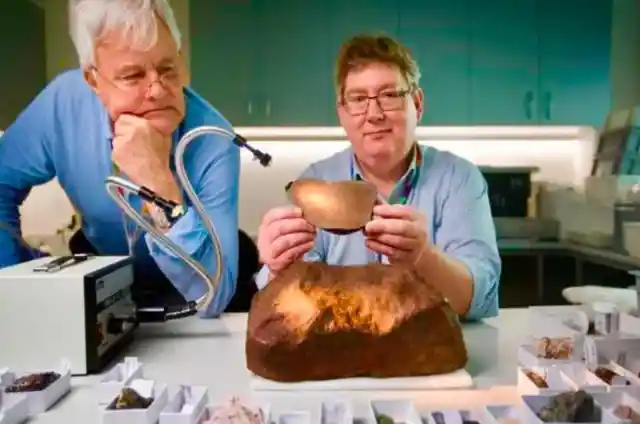
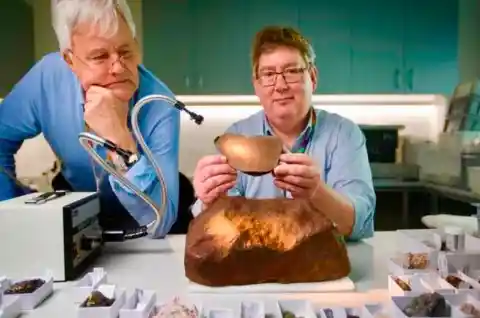
Lo and behold, both Dave and Dermot were astonished. The red rock was, in fact, a meteorite! And, even more fascinating, it was an impressive 4.6 billion years old! But despite the excitement of the discovery, Dermot knew this meteorite carried some serious implications.
Cutting It In Half
Dermot knew he had to cut the rock to find out more answers. Using a powerful tool known as a diamond saw, the geologist cut out a cross-section of the meteorite.
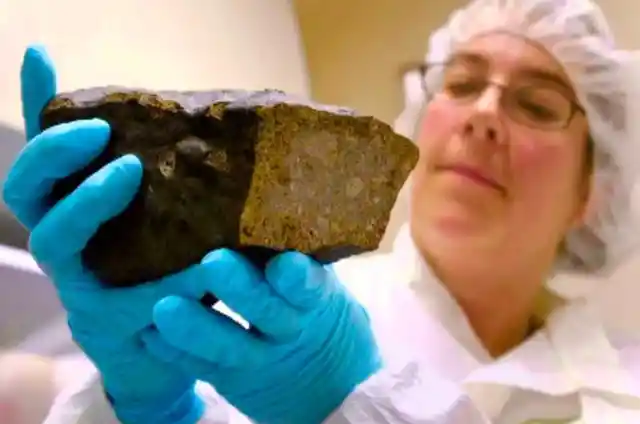
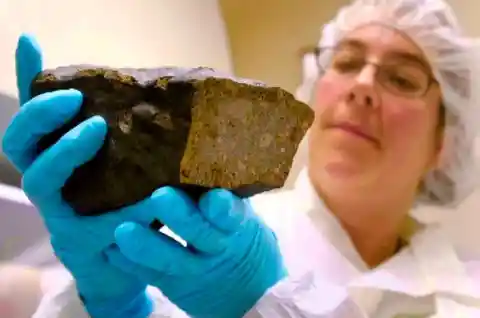
With sparks flying, everyone in the room was on edge. And then, once complete, what they beheld was much more awe-inspiring than almost anything the scientist had seen in all his years of working.
Cross-Section
The cross-section of the meteorite revealed beautiful silver droplets inside, but not just any droplets.
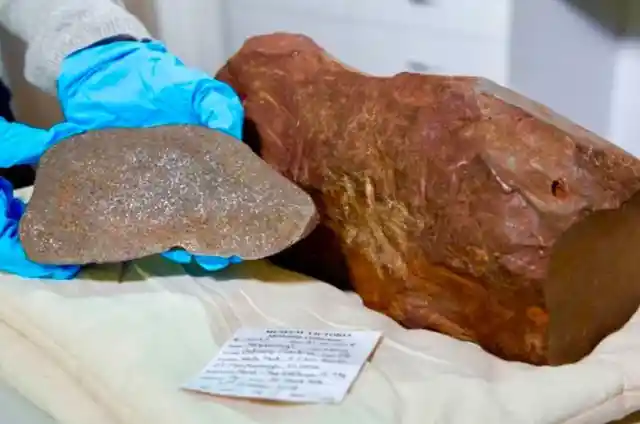
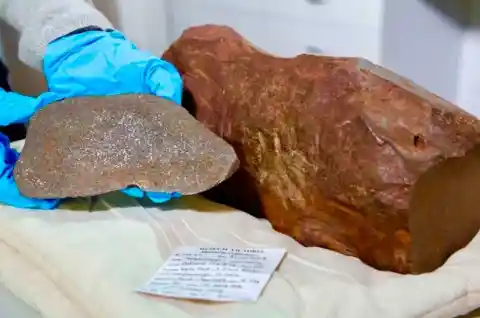
These had been formed billions of years ago, crystallized from the cloud of incredibly hot gas that formed our solar system. Once the truth was revealed, Dave was amazed by his discovery. No one, least of all him, could believe that he found it — or what it was worth.
History
Due to the lack of weathering, it's likely that this specific piece had only been on Earth for less than two hundred years; this makes it likely that someone had actually seen it fall.
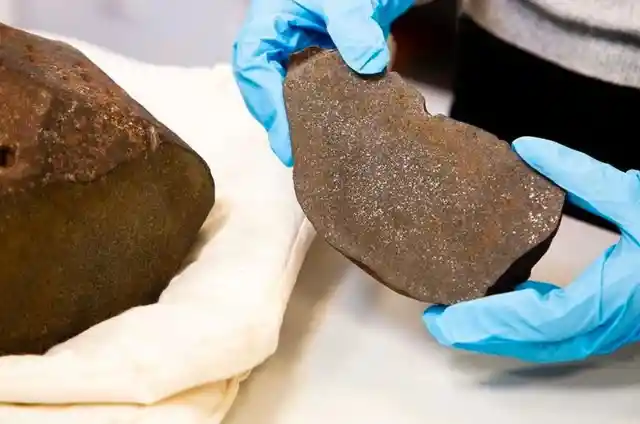
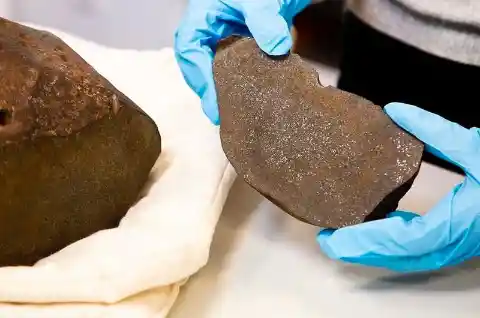
Sure enough, a look at local newspaper records from the time almost confirm this theory, as residents of Maryborough in the 1950's report having seen balls of fire shooting across the night sky!
Meteorites
Meteoroids seldom make it all the way to Earth's surface, but when they do, the results can be catastrophic.
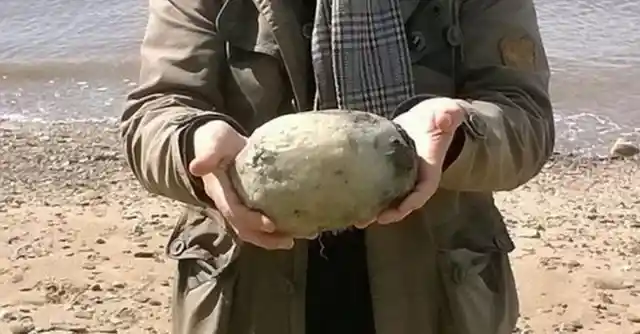
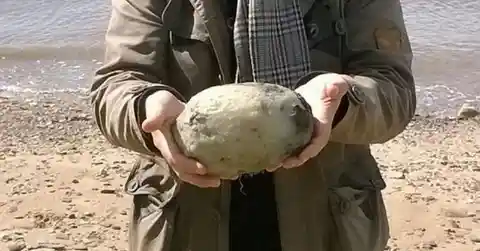
Past collisions blew out massive craters and, according to theory, killed the dinosaurs. But what Dave found on that fateful day in 2015 was one of the biggest meteorites to ever be found by a metal-detectorist.